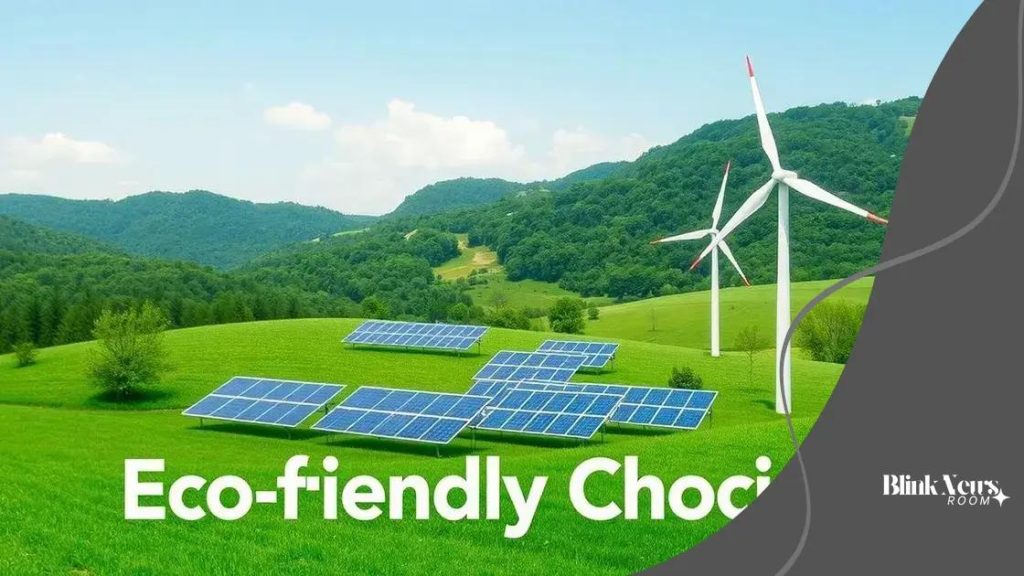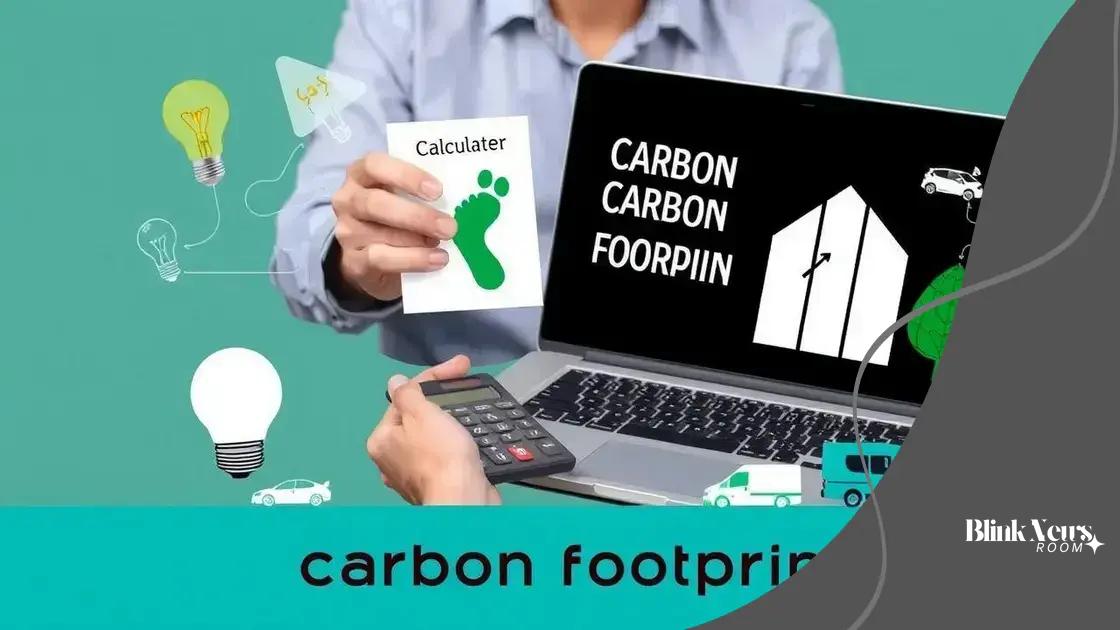Carbon offset incentives: tax breaks for eco-friendly choices

Anúncios
Carbon offset incentives provide financial benefits, such as tax credits and deductions, for individuals and businesses investing in eco-friendly initiatives to reduce their carbon footprint and promote sustainability.
Carbon offset incentives are becoming increasingly popular as more individuals and businesses look for ways to reduce their environmental impact. Are you curious about what these incentives could mean for you? Let’s dive into the details that can lead to financial and ecological benefits.
Anúncios
Understanding carbon offsets and their importance
Understanding carbon offsets is crucial in today’s eco-conscious society. Essentially, carbon offsets allow individuals and companies to compensate for their greenhouse gas emissions. By investing in projects that reduce emissions, such as renewable energy and reforestation efforts, one can effectively balance out their carbon footprint.
How Carbon Offsets Work
When you purchase a carbon offset, you support a project that prevents an equivalent amount of carbon dioxide from entering the atmosphere. This process plays a significant role in pursuing sustainable practices. It’s an approach that aligns economic development with environmental responsibility.
- Renewable energy projects, like wind or solar power.
- Reforestation or afforestation programs.
- Energy efficiency initiatives in industrial sectors.
Investing in carbon offsets is not just a personal choice; it’s part of a larger movement toward sustainability. People are increasingly looking for ways to contribute to a healthier planet. Whether you drive less, use less energy, or invest in carbon offsets, every small action counts.
Anúncios
The Importance of Carbon Offsets
Why are carbon offsets important? They help mitigate climate change effects by reducing overall emissions. This process can also foster public awareness about environmental issues. When purchases of offsets become more mainstream, they highlight society’s commitment to eco-friendly choices.
Furthermore, businesses engaging in carbon offsetting can elevate their brand image. Customers are more likely to support companies demonstrating social and environmental responsibility. Ultimately, embracing a combination of methods, including carbon offsets, enhances the potential for a sustainable future.
Types of tax breaks for eco-friendly initiatives
Understanding the types of tax breaks available for eco-friendly initiatives is essential for anyone looking to make sustainable choices. These incentives not only reward responsible environmental practices but also encourage businesses and individuals to invest in green technologies.
Common Types of Tax Breaks
Tax breaks can come in various forms, making it easier for people to reduce their carbon footprint. Some of the most common types include:
- Tax credits: Direct reductions in the amount of tax owed after making eco-friendly purchases.
- Tax deductions: Allowable expenses can help lower the taxable income, such as the cost of installing energy-efficient systems.
- Grants and rebates: Financial assistance for making energy-efficient upgrades, often provided by local or federal programs.
Each of these tax breaks plays a role in promoting green initiatives. By taking advantage of them, you can lower your tax burden while supporting renewable energy sources and other eco-friendly projects.
The Impact of Tax Breaks on Green Choices
These tax incentives significantly impact consumer behavior. When people know they can receive financial benefits for going green, they are more likely to invest in environmentally friendly options. Whether it’s purchasing electric vehicles or investing in solar panels, the potential for substantial savings creates a compelling reason to make sustainable choices.
In addition, businesses that implement eco-friendly practices can enhance their appeal. Customers increasingly favor companies that show commitment to sustainability. Thus, tax breaks not only encourage individual responsibility but also drive corporate accountability in the realm of environmental stewardship.
How to calculate your carbon footprint

Calculating your carbon footprint is an important step in understanding your impact on the environment. It helps you see how your daily activities contribute to greenhouse gas emissions. This simple process can inspire you to make better choices.
Steps to Calculate Your Carbon Footprint
To begin, gather information about your lifestyle. Here are some easy steps to follow:
- Track your energy usage: Record the amount of electricity and gas you use monthly.
- Consider transportation: Calculate the miles you drive regularly and the type of vehicle you own.
- Account for waste: Consider how much waste you produce, including recycling and composting efforts.
Once you have these details, you can use online calculators to estimate your carbon footprint. These tools take your input and provide an estimate of your annual emissions based on various factors.
Understanding Your Results
After calculating, you will receive a number representing your total emissions. This figure can guide your decisions. If your footprint is high, you might think about alternative methods of transportation, such as biking or public transit, which can greatly reduce your impact.
Moreover, small changes in your daily habits can make a significant difference. For instance, reducing energy use in your home, buying locally produced foods, or minimizing water waste are great starting points. Every little action counts when it comes to lowering your carbon footprint.
Eligibility criteria for carbon offset incentives
Understanding the eligibility criteria for carbon offset incentives is vital for anyone looking to benefit from these programs. Different initiatives may have varying requirements, and knowing these can help you make informed decisions.
General Eligibility Requirements
Typically, to qualify for carbon offset incentives, applicants must meet certain conditions. Here are some common criteria:
- Residential or commercial properties: Many programs require that the property involved is either a residential or commercial space, thus ensuring the project has a defined impact.
- Project types: The project should fall under approved categories, such as renewable energy production, energy efficiency improvements, or reforestation.
- Verification processes: Certain initiatives necessitate that projects undergo certification or verification by an authorized body to ensure they meet environmental standards.
Meeting these criteria can open doors to various benefits, including tax deductions or credits. Understanding the specifics can help you maximize your savings while contributing to a healthier planet.
Additional Considerations
Some programs may have unique rules based on your location or the specific project type. For example, local governments might offer specific incentives for energy efficiency upgrades in homes.Researching local laws and programs is essential to ensure compliance.
Furthermore, being involved in community-based projects may also enhance your eligibility for certain incentives. Community initiatives often focus on larger impacts, making them appealing to both local governments and private investors.
Maximizing benefits through effective planning
Maximizing benefits from carbon offset incentives requires strategic planning. With thoughtful steps, individuals and businesses can enhance their outcomes and achieve their sustainability goals.
Effective Strategies for Planning
To ensure you gain the most from these incentives, consider the following strategies:
- Assess your current emissions: Understanding your baseline emissions can help identify areas for improvement.
- Research available incentives: Different programs offer various benefits. Knowing what’s available can guide your decisions.
- Set clear goals: Define specific, measurable targets to make your sustainability efforts more focused.
By outlining your objectives, you can prioritize actions that yield the highest returns on investment. For example, implementing energy-efficient systems can lead to larger tax savings over time.
Utilizing Resources
Many resources are available to assist in your planning process. Local governments often provide information on applicable programs, while environmental organizations can offer guidance on best practices. Involving experts can maximize effectiveness, whether through formal consultations or community workshops.
Networking with others who are pursuing similar goals can also enhance your strategy. Sharing insights and experiences can lead to innovative ideas and stronger collaboration on large-scale projects.
FAQ – Common Questions About Carbon Offset Incentives
What are carbon offset incentives?
Carbon offset incentives are programs that allow individuals and businesses to reduce their carbon footprint by investing in projects that decrease greenhouse gas emissions.
How can I calculate my carbon footprint?
You can calculate your carbon footprint by tracking your energy consumption, travel habits, and waste production, then using online calculators to estimate your annual emissions.
What types of tax breaks are available for eco-friendly initiatives?
Common tax breaks include tax credits, tax deductions, and grants for renewable energy projects or energy efficiency improvements.
How can I maximize the benefits of carbon offset incentives?
To maximize benefits, assess your emissions, research available incentives, set clear sustainability goals, and use community resources for support.